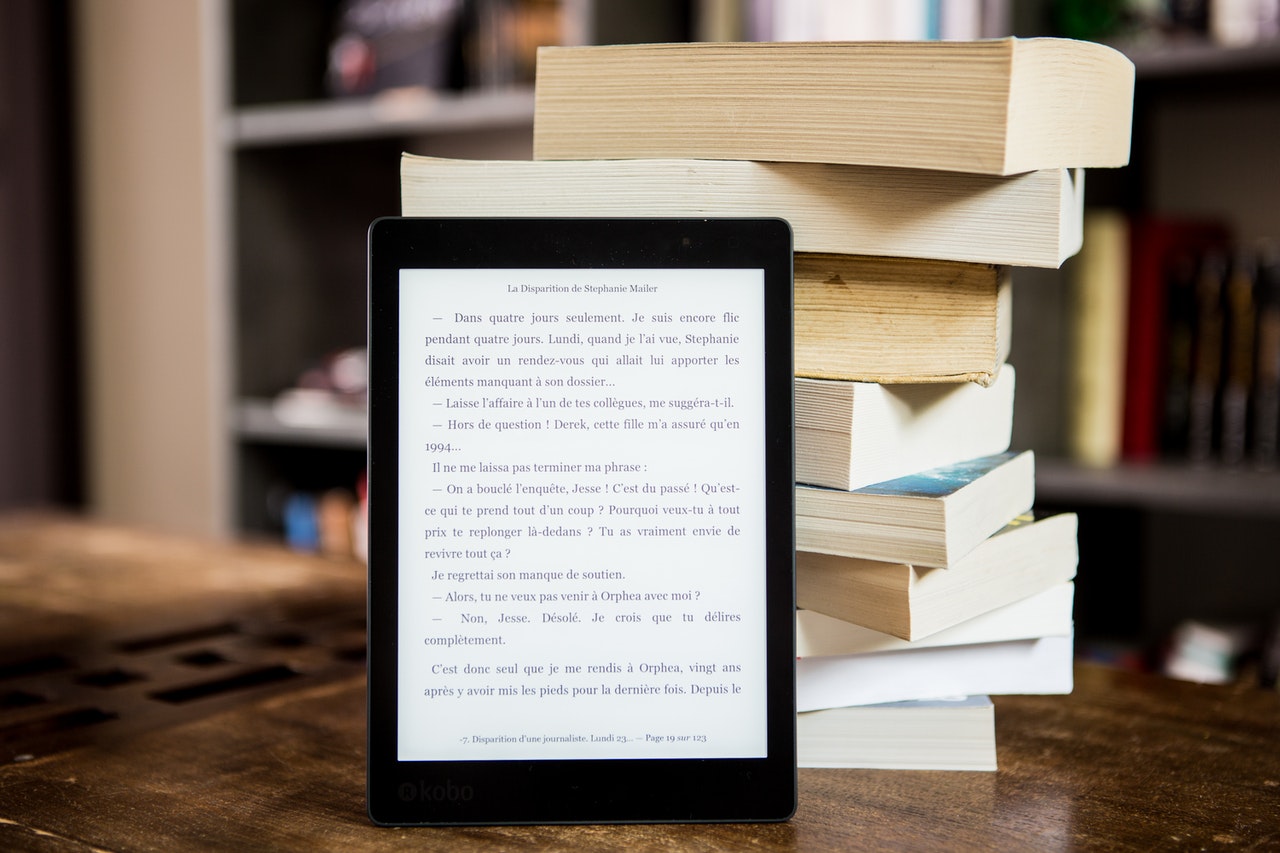Books, in general, are widely entertaining and informative. Readers everywhere would say that books have the capacity to transport you to different places through your imagination. Aside from being informative and entertaining, books can also help you develop your imagination and creativity. Therefore, books will never go out of style. You will always have readers who are willing to invest in books no matter what form they take.
Most readers are used to printed books because e-books only became famous with the rise of different gadgets such as cellphones, tablets, and computers. When e-books were first introduced to the public, people started wondering why they should choose e-books over printed books. Although e-books do not give readers the actual immersive feeling of appreciating the design of a book’s cover in person and the feel of pages turning, e-books offer more in terms of convenience and accessibility. On the other hand, some readers would also say that printed books give readers the best reading experience.
With these differences in mind, you might find it hard to decide whether you should focus on selling books or e-books. Regardless of your choice, below are the advantages of both e-books and printed books for your comparison.
Selling Points for Printed Books
1. Printed books allow readers to savor the feel of paper. Some people would really say that the feel of the paper is crucial to the overall reading experience. Most avid readers would also agree that the feel and smell of pages, plus holding a printed book in hand, are some of the most important sensations when reading a book.
2. Printed books are good for sharing. Once you have finished reading a book, you can lend your book to a friend or family member. This way, you get to share the experience and feeling of satisfaction you felt while reading the book.
3. Printed books are also well-known in terms of supporting colorful images and illustrations. Compared to e-books which mostly support only black and white displays, printed books support bursts of color and variations in the font.
4. Printed books also present flexibility in annotating. Although some readers despise making annotations in books, others would say that this is very helpful because it helps keep track of progress and remember useful information.
5. Printed books allow readers to skim through their contents. Skimming through a printed book is more convenient compared to skimming through an e-book reader.
6. Printed books do not require electric power. Its contents are always readable and readily available to its readers. You have to find a good source of light, and you’ll be all set for a good reading experience.
7. Lastly, printed books are less expensive compared to e-books. If you don’t read much, it will be better to purchase printed books because they would not be taking up too much space in your home. Printed books are cheaper because there is always a shelf life on the book’s overall physical structure.
Selling Points for E-books
1. One of the best things about e-books is that they promote ease of reading. This means that e-books help readers read with more comfort. For instance, e-book readers can read a book with one hand or while lying down. Furthermore, e-books enable readers to read even in the dark because e-book readers are always equipped with inbuilt lighting.
2. E-books enhance accessibility because e-book readers can store thousands of books at the same time. This means that readers can carry thousands of books inside an e-book reader. E-books enhance convenience, too, because readers can access these e-books anytime and anywhere.
3. E-books are also more cost-effective compared to printed books because there are many affordable e-books on the Internet that readers can have. E-books also take up very little space inside a gadget’s storage system.
4. E-books have also made bookmarking and highlighting easier by introducing customization features on e-book readers. Like in printed books, e-book readers can highlight the data and information they find highly important or relevant.
5. A lot of e-book readers have inbuilt dictionaries and can even easily access Wikipedia. This means that e-books make it easier for readers to understand what they are reading through the assistance of the features of an e-book reader.
6. Another good thing about e-books is that they never go out of stock. This means that any digital copies of different data and information are always accessible to readers.
7. There are a lot of free e-books that readers can read online. Therefore, they can help spark readers’ interest in reading through its highly accessible, convenient, and economical sources of information.

Despite all the differences between e-books and printed books, it still cannot be argued that reading is a good hobby. Therefore, selling books will always guarantee your customers. You have to market the advantages of the kind of books you would want to sell. Later on, you can expand your niche if you want to.
However, starting small always helps, especially for first-time entrepreneurs. Therefore, you can establish a loyal customer base first before you think of expanding your business and advertising more products for sale. If you choose to focus on e-books, establish a loyal customer base for e-books first. Later on, you can start selling printed books and see if diversifying will promote growth and success for your business.

